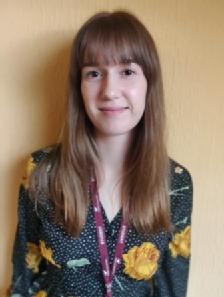Rachel Butler

Tell us about yourself
I am Rachel Butler, a third year PhD student at Aston University working with Professor Andrew Devitt. I work in the School of Biosciences studying cellular communication between dying cells and immune cells in the context of inflammation.
Can you give us an overview of your project?
Our aim is to understand the molecular interactions between apoptotic (dying) cells and immune cells. Apoptotic cells release membrane-enclosed structures, termed extracellular vesicles (EVs), that function by promoting migration of immune cells and inducing changes in immune cell phenotype. Crucially, this interaction promotes clearance of apoptotic cells which is vital for resolution of inflammation and maintaining tissue homeostasis.
EVs present a host of molecules at their surface which will inevitably govern early interactions with recipient cells. The aim of this project is to characterise the surface proteome of apoptotic cell-derived EVs to understand EV:immune cell interactions at a molecular level. This may pave the way to develop artificial EV therapies that can promote apoptotic cell clearance as a treatment for chronic inflammation.
How did the seedcorn access help?
Seedcorn access gave me the opportunity to image my EV samples at high resolution (cryo-TEM) which not only provided evidence that EVs were present in my samples (as required by most journals in EV research), but also allowed single-EV characterisation revealing morphological characteristics such as size, shape and luminal density.
How did you hear about the seedcorn access?
Upon completing an MIBTP masterclass with facility manager, Saskia Bakker, I was informed of the Seedcorn access route.
How was the application process?
The application process was straightforward and didn’t take long to complete. Within a couple of weeks my application had been approved and an informal meeting with Saskia Bakker was arranged in which we discussed sample preparation and a date to bring samples across.
What were the outcomes?
I gained approximately 100 images of EVs derived from 5 different cell samples and interestingly, observed clear differences in EV shape and size, depending on the cell type. Additionally, having spent the entire day with Saskia, she explained each part of the process to me to ensure I understood the sample preparation and image acquisition set up. As someone with no previous experience of TEM prior to the Seedcorn access, it was greatly beneficial having Saskia’s help with interpretation of certain features of my samples. Saskia not only helped me on the day but answered a series of questions that arose during analysis of the images in the subsequent weeks.
What would you have done without the seedcorn access?
Without Seedcorn, we would’ve used my grant money to submit for a paid service at another institution. Whilst this would have provided me with images of my EVs, I would not have benefitted from understanding the imaging process from start to finish, as I did via Seedcorn with Saskia.
